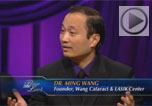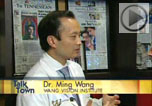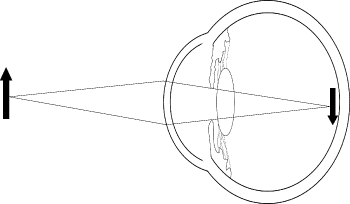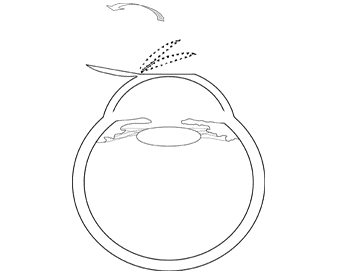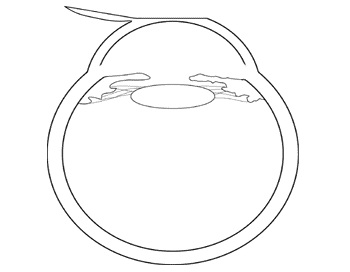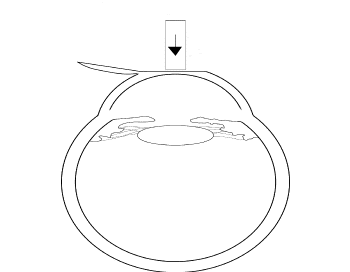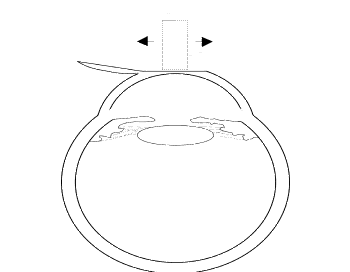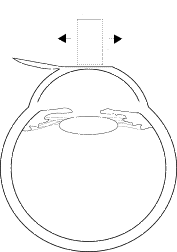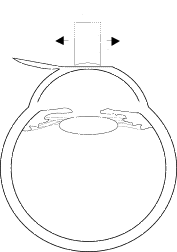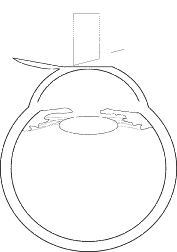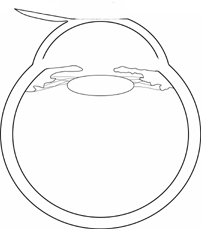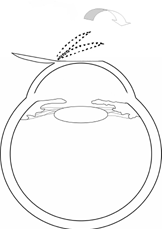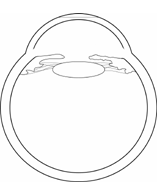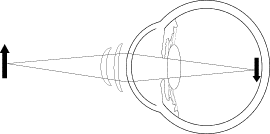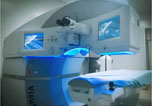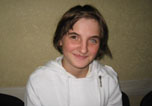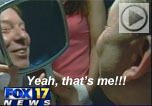- Over 55,000 LASIK and cataract procedures (including on over 4,000 doctors)
- The FIRST center in TN to offer Laser Cataract Surgery
- Introduced bladeless all-laser LASIK to the state
- Implanted the state's first FOREVER YOUNG™ Lens
- The first surgeons in the US to perform a new Intacs surgery to treat keratoconus
- Helped patients from 40 states and 55 countries
- International referral center for cataract surgery and LASIK complications
- Read Dr. Wang's book: LASIK Vision Correction
Why did you decide to have LASIK? Why did you choose Dr. Wang? How has your life changed since your LASIK procedure?
What is your advice for people considering LASIK?
Click to read more
|
Chapter Six The Preprocedure Consultation If you decide to proceed with LASIK vision correction, there will be three distinct parts to your experience:
This and the next two chapters review in detail each part of the experience. The Preprocedure Consultation Before you proceed with LASIK vision correction, you need a preprocedure consultation with the surgeon. This consultation is important for several reasons. First, it must be determined whether you are a candidate. It is also vital for you to learn as much as you can about your options and have as many of your questions answered as possible. To be a candidate, you must meet the following requirements:
Fear of the Unknown Of all the concerns that face people considering refractive surgery, fear of the unknown is perhaps the greatest. Este's story is the norm for people about to undergo LASIK: "Talk about high anxiety. I almost didn't go through with it because of fear of the unknown. I completely freaked out and was a basket case. After the procedure, I could tell that I could see better, but there was a bit of a haze. By the evening, I was reading the stock exchange numbers that scroll across the bottom of the TV on CNN. By the morning, I could see perfectly. It was amazing. I just can't believe that one day I'm wearing glasses and a day later I'm not. I absolutely encourage anyone who needs or wants this surgery to do it. It is probably one of the best decisions you will ever make." --Este W Wesley's story is a bit different, and notwithstanding all the study and preparation he did prior to choosing LASIK, he still experienced that very normal nervousness and trepidation of having someone work on your eyes. This is what he went through: "I must admit that I was incredibly nervous undergoing the LASIK procedure on my eyes. I had read numerous articles, discussed the procedure with numerous professionals, and researched various centers and doctors before deciding to have the surgeon I chose perform my LASIK procedure. In retrospect, the worst part of the experience was the anticipation of having someone operating on my eyes. "The surgery was completely painless and was completed within fifteen minutes on both eyes. I couldn't believe that it would be so easy. I was totally comfortable during the surgery and was engaged in a relaxing conversation with the surgeon and his staff. Immediately after the procedure I stood up and couldn't believe how well I could already see. It was incredible! "On the way home, I could already see license plates and road signs. In the morning, my vision was better than perfect. I went from 20/200 vision to 20/15 vision in less than twenty-four hours. It's a true miracle. I was able to return to my duties as a police officer the following day. The freedom experienced by being contact lens and glasses free is exhilarating. I would encourage anyone contemplating the surgery to have it done. The LASIK procedure has changed my life and is one of the best decisions I have ever made." --Wesley L These are but a few of many testimonials from thousands of thrilled patients who have undergone LASIK. In a matter of minutes, they have been transformed from a lifetime of visual bondage to freedom, no longer dependent on cumbersome eyeglasses or irritating contacts. What to Expect Medical and Ocular History At your preprocedure evaluation, a thorough eye exam will be performed. This will include collecting a careful medical and ocular history. It is important for your doctor to know everything about your medical history as certain systemic diseases such as rheumatoid arthritis, lupus, certain healing disorders, diabetes, and a current or planned pregnancy may need special consideration. The ocular history will include questions about previous contact lens wear and eye disease. One specific eye disease that the doctor must know about is herpes simplex on the eye. He will explain that diseases such as glaucoma or diabetes will not preclude you from having the procedure, but they must be identified and controlled. It is important for you to notify the doctor of any ongoing changes or problems with your vision during the consultation. If you have a significant cataract and are experiencing glare, changing vision, or decreased sight compared to what you normally see, you should not undergo LASIK vision correction. LASIK Measurements The examination will include a measurement of your refractive error and a complete exam of the front of your eye, including a sophisticated digital mapping of your cornea with a device known as a corneal topographer. The thickness of your cornea and your intraocular pressure will be measured. Finally, your dominant eye will be determined and your pupil size measured. Contact lenses, particularly hard or rigid gas-permeable lenses, have been known to warp the cornea and interfere with some of these measurements. If you wear contact lenses, they must be removed prior to the final LASIK measurements in order to allow the cornea to return to its natural shape--one week for soft lenses, two to three weeks for toric or gas-permeable lenses, and possibly longer for hard lenses. After the LASIK measurements, if you are unable to tolerate glasses for the length of time necessary for unwarping to occur, some hard-lens wearers may be able to switch to soft lenses until two weeks before the surgery. It is important that your refraction and corneal topography readings be stable before you proceed with surgery. Pupillary Dilation To get an accurate recheck of the refraction, drops will be instilled to temporarily relax your eye's focusing muscles. This pupillary dilation also allows the doctor to examine the back of your eye, including the retina and the optic nerve. These relaxing drops will make you sensitive to light and may affect your near vision for up to thirty-six hours, so you should plan accordingly. You may want to have someone drive you home. Also, there are eye drops that will reverse dilation sooner. Monovision If you are in your late thirties or older, the option of monovision (or blended vision) should be discussed at your preoperative consultation. Monovision allows some patients to see near objects without the use of reading glasses. As mentioned in Chapter Two, patients in their late thirties to mid forties begin to develop presbyopia, or difficulty with their fine focusing. The laser cannot correct this problem. Thus, a patient who has presbyopia in addition to nearsightedness or farsightedness will still need reading glasses if both eyes are corrected perfectly for distance. Monovision refers to the "undercorrection" of one eye in a nearsighted patient or the "overcorrection" of one eye in a farsighted patient. The technique involves correcting the dominant eye for distance and the nondominant eye for near vision, thereby reducing the need for reading glasses. When both eyes are functioning together, the brain naturally "looks" through the eye that is clearer. So, for distance vision the brain sees mostly with the dominant eye, and for near vision it sees mostly with the nondominant eye. Having eyes for different purposes might sound unsettling, but some patients do quite well with some degree of monovision. The best way to decide if this is something you want is to discuss it with your doctor. He can show you with contact lenses what it will feel like before you have your surgery. Additionally, in the event you do try monovision and do not like it, additional laser correction can be added to make both eyes equal, although ideally this is determined in advance to avoid the risk of unnecessary surgery. Education In addition to obtaining the medical information necessary for your surgery, an equally important objective of the consultation is to educate you regarding all aspects of LASIK vision correction. Learning about the procedure and discussing your options are important for making an informed decision. The initial educational process should include videos and written information to help you understand what you can reasonably expect from the procedure. Reasonable expectations are an essential ingredient for a happy postoperative patient. If you are over forty, your ability to read normal size (twelve-point) text should be discussed, including the option of correcting your nondominant eye for reading (monovision). You will be asked to decide whether you want both eyes done at the same time or whether you prefer that the procedures be done on separate days. While most patients prefer to have both eyes done at the same time, this is optional rather than mandatory. Some surgeons only perform surgery on one eye at a time to reduce risk or increase accuracy. While much of the education process can be done by a specially trained counselor or technician, you will still be given the opportunity during the preprocedure evaluation to have a one-on- one meeting with the surgeon for him or her to carefully evaluate your eyes and answer any questions you may have. It is most important that you feel comfortable and confident with your doctor. LASIK requires a highly skilled surgeon to create the flap--one dedicated to obtaining precise results--in order to properly program the excimer laser. The follow-up care is relatively simple in most cases. Previous Surgery Patients who have had certain types of surgery previously are sometimes a candidate for LASIK or PRK as a second procedure to enhance visual results. LASIK on top of a previous radial keratotomy (RK) to correct myopia and astigmatism is a technique that has been used successfully in many cases, provided that the patient's vision is relatively stable and there is no significant corneal scarring. Patients who have had a previous corneal transplant can have a secondary LASIK or PRK procedure to enhance the results. This is especially effective for patients who develop a high degree of astigmatism that is surgically induced. A clear corneal transplant can only allow good vision if it has a relatively smooth corneal surface. Laser vision correction is especially beneficial to corneal transplant patients with unusual refractive errors and can smooth out astigmatic curves in the cornea. These are often more difficult surgeries with less predictable results, and patients should consult with their surgeon to determine their eligibility. Price You will decide with your surgeon which procedure is best for you, and that procedure will be discussed with you in detail. You may also view a video which further demonstrates the procedure. Time will then be taken with you to answer any questions that you may have. After you decide to undergo LASIK vision correction, the only other preliminary step remaining is to have you sign an informed consent form and arrange for payment of the procedure. The cost of LASIK and PRK depends on the procedure, your area of the country, the type of equipment used, the experience of your surgeon, and whether follow-up care and enhancement (retreatment) procedures are included. You should always feel comfortable about asking questions of your surgeon, both prior to and following the procedure. Step 1 |
If you're interested in bladelessLASIK, choose experience and technology. Choose Wang Vision 3D Cataract and LASIK Center of Nashville, Tennessee. Call (615)321-8881 or email us today.
Our new texbooks
A 501c(3) charity that has helped patients from over 40 states in the US and 55 countries, with all sight restoration surgeries performed free-of-charge.



